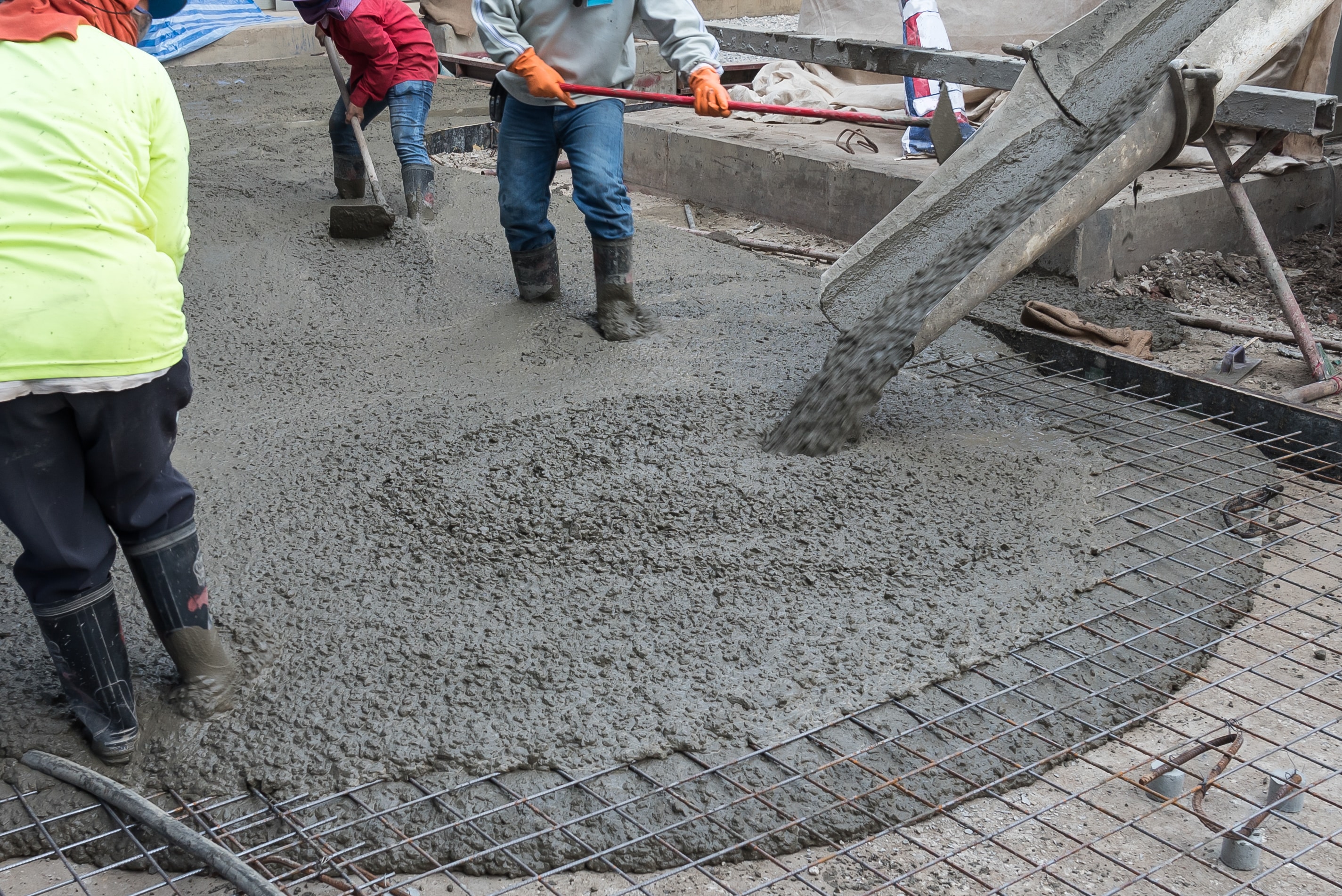Pouring concrete for your worksite takes a significant amount of care and attention to detail. You need to make sure you have your shapes and joints planned out and your workers are prepared to make sure the concrete sets exactly how you want it to. During certain seasonal extremes, you will need to take extra measures to ensure your final product turns out the way you want.
Pouring Concrete in Cold Weather
During the winter months, the temperatures can plummet compared to what is normal during the rest of the year. When the temperature reaches below 45℉, you officially need to take certain precautions when pouring concrete. If you need to pour concrete during a stretch of cold weather, pay close attention to detailed weather reports for the day you are planning to pour. If there will be highs above 45℉ for a decent portion of the day, try to schedule your concrete pour during those hours. If cold temperatures are unavoidable, then you will need to alter your concrete pouring plans.
The concrete can harden too quickly if the temperatures are too low, leaving you with insufficient time to properly shape and flatten your concrete. For informal projects where you mix on-site, you can reduce the amount of water in the mix to prevent premature hardening. For ready-mix solutions with specific formulas, you will want to control the environment of the pour as much as possible to maintain the desired strength and density of the mix. The best way to do this is to use a temporary heat enclosure over the site of the concrete pour. If you are using any form of gas-generated heat, be sure to properly ventilate the enclosure to prevent carbon monoxide poisoning.
Pouring Concrete in Hot Weather
Pouring concrete during the intense heat of the summer comes with a similar problem to pouring concrete in the winter. The concrete will set too quickly in hot temperature extremes because of water evaporation. When the temperature is above 80℉, that’s typically when it’s time to take some extra precautions when pouring. A temperature of 90℉ can cause concrete to set in just 2.5 hours, far less than the ideal time of 4 hours. This can result in unwanted cracking, insufficient time to shape your concrete, and reduced concrete strength. If you are pouring concrete during the summer, it’s best to stick to early morning hours to avoid the peak heat of the day. If the extreme temperatures become unavoidable for any reason, you have a few options. If you are mixing the concrete yourself, you can add extra cold water to the mix to try to keep the temperature down.
For precise ready-mix concrete, you won’t have a chance to add cold water to the mix, not to mention you don’t want to tamper with the solution, so you will have to rely on other options. If you need to pour ready-mix concrete during intense heat, you will have to set up a covering over the concrete pour site to create a cooler environment for the concrete to set. Be sure your coverings account for the shifting position of the sun. You can also spray cold water over the area before you pour and over the surface afterward. This will help maintain the integrity of the formula because the surface water is evaporating instead of the water included in the ready-mix concrete.
Contact Knight’s to ask about our Redi-Mix division, along with our other exceptional concrete and septic services.

